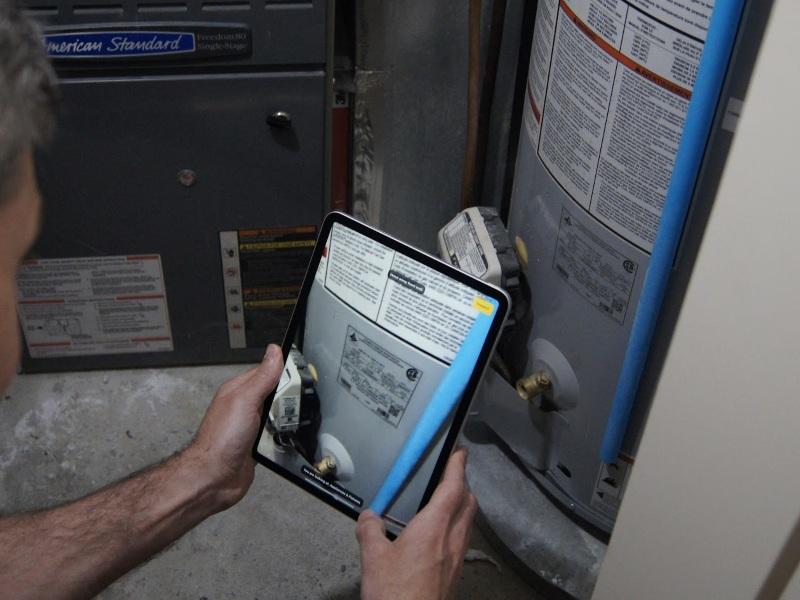
Lithium ONE Environmental Inc. (L1X), a Toronto-based clean mining company, is pioneering a technology to extract clean lithium with zero water consumption and generate a byproduct that can be turned into hydrogen fuel.
Founded in 2018 and led by CEO David J. Stevenson, its nano-extraction technology, the L1X System, promises an environmentally friendly technique that draws out lithium from brine and produces ultra-pure water which can be broken down into hydrogen and oxygen.
Stevenson said in an interview with Sustainable Biz Canada the company is addressing a significant water consumption problem. The lithium industry uses trillions of litres of potable water per year just for batteries, which can strain water supplies in local communities, he said.
In late September, L1X announced it completed testing of the technology and would seek a private placement for $5 million in Series A funding and a $30-million Series B round. The equity would facilitate construction of a facility in Argentina capable of producing 2,500 tonnes of lithium carbonate equivalent per year.
Though it “almost sounds too good to be true,” Stevenson said L1X is using an already-commercialized technology that is finding a new application in the lithium industry, especially important with the expanding interest in electric vehicles and ESG.
From finance to lithium
Stevenson is a long-time financial professional and entrepreneur who also currently serves as president and CEO of PowerAssist Technologies Inc. and president of Braeheid Wealth Management. As he was building his wealth management company, he came across nano-extraction and recognized its potential applications for the lithium industry.
Another precursor of his L1X involvement was a conversation with his daughter.
“She asked me one day, ‘when are you going to buy a Tesla and stop using gasoline?’ That was about a week before meeting my technology providers, the inventors of the technology behind L1X.”
They explained how nano-extraction was used in a variety of industries – oil and gas, nuclear, pharmaceuticals, fracking – and Stevenson asked if it was applicable for the lithium industry. An affirmative answer led him to work with inventors and experts in nano-extraction technology to develop a system to extract and produce lithium from brine.
The L1X System, he said, will protect water, land and air resources and the interests of Indigenous peoples and local residents which reside much of the property on which his firm will be operating.
Turning water to lithium and hydrogen
The L1X System starts by taking brine pumped into tanks, where it is subject to a separation and concentration process. Then membranes concentrate the brine to form lithium concentrate and ultra-pure water.
Almost all of the lithium (98 to 99 per cent) is extracted from brine while using no external water consumption and no toxic chemicals, the company claims. It takes a few days to output a usable product. There are also other minerals like manganese, potassium and cadmium that can be extracted out.
The company says its system is a more sustainable alternative to other methods such as using evaporation ponds. L1X says that method only removes 40 to 50 per cent of the lithium, pollutes the environment and consumes large quantities of water while taking two years to go from pumped brine to a usable lithium product.
The L1X System is also highly energy efficient. L1X says it uses $100 of energy per tonne of lithium compared to over $20,000 per tonne of lithium using more conventional thermal evaporation techniques.
A byproduct of the L1X System is ultra-pure water, which can be separated into hydrogen and oxygen. The hydrogen can be sold for use as a clean fuel and the oxygen can be sold as a commodity.
L1X's business plan is:
- direct sales of lithium from extraction and production;
- joint ventures with mining companies, land owners and governments; and
- land purchases and land-resource royalty agreements.
L1X’s facilities and future plans
L1X is building a $100-million commercial demonstration facility in Catamarca, Argentina, projected to process 2,500 tonnes of lithium carbonate equivalent per year.
To fund its construction, L1X is seeking a $5 million equity raise, a $30 million convertible debenture and $70 million to $90 million in debt against the facility. Stevenson said it can be operational in the next 18 to 24 months. The production facility is guaranteed.
L1X has gained attention from multinational car and battery manufacturers for offtake agreements, though Stevenson could not disclose details at this point.
Stevenson highlighted the scalability of the L1X System is due to the mass manufacturing facilities its technology provider has in China and Malaysia.
The next planned project is a $1.2-billion facility to produce 25,000 tonnes to 35,000 tonnes of lithium per year.
“Our ultimate goal is to meet global demand with clean sourced lithium . . . It’s not about the money. It’s about being able to deliver to the industry and consumer market with clean sourced lithium with zero water consumption, zero pollution.”










